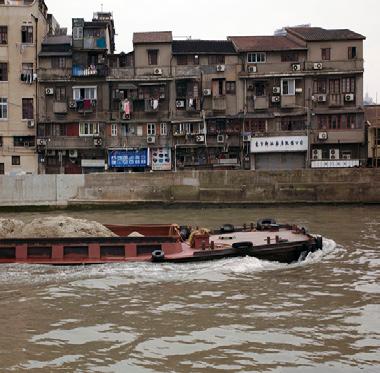
3 minute read
Literature Review
Many of the major problems humans face in the 21st relate to water crises (UNESCO, 2009). Water crises directly impact more than a third of the world’s population in terms of public health. People may develop health problems due to low water quality through food chains or recreations (Schwarzenbach et al., 2010). In developing countries, such as China, wastewaters are still untreated or not treated effectively to remove micro-pollutants.
Water pollution remains an enormous problem in industrialized countries, too. For example, triazines or chloroacetanilides are frequently detected in U.S. rivers (Tilman et al., 2001). A Gallup poll taken in 2009 indicated that water pollution is one the most concerning environmental issues in the US (Gallup, 2009) as 100,000 chemicals have been detected in polluted water (Schwarzman and Wilson, 2009).
The presence of arsenic in groundwater is also a global concern. In Bangladesh alone, arsenic-contaminated groundwater affects between 35 and 75 million people (Chen et al., 2009); in West Bengal, India, around 6 million people are at risk for arsenic poisoning (Haque et al., 2003). Other regions of concern include the highly populated river deltas in Cambodia and Vietnam (Berg et al., 2007). Arsenic pollution also affects developed countries, such as United States and Eastern Europe (Jamison, 2006).
Groundwater contamination is often related to municipal solid waste landfills, hazardous waste sites, and accidental spills. Some typical approaches to mitigate groundwater contamination include permeable reactive barriers and phytoremediation. However, many remediation approaches are either too expensive to implement or too inefficient because the treatment requires years or even decades (Henderson and Demond, 2007).
Apart from chemical pollution, viruses and microbial pathogens also pose public health concerns. On a global scale, the restricted access to safe water and improved sanitation causes 1.6 million deaths per year (World Health Organization, 2009). More than 99% of these deaths occur in the developing world. Nine out of ten incidents affect children, and 50% of childhood deaths happen in sub-Saharan Africa (World Health Organization, 2006). According to the World Health Organization, waterborne diseases top the lists of infectious disease outbreaks in 132 countries (from 1998 to 2001).
Waterborne pathogens spread primarily via feces-contaminated water, suggesting that a clear separation between wastewater and drinking water systems is crucial (Schwarzenbach et al., 2010). Centralized drinking water production and distribution systems are economically favorable and used in industrialized countries, while household-level solutions are more suitable for low-income countries (Schwarzenbach et al., 2010).
Rapid urbanization and the everincreasing poverty in cities exacerbate the problems of water contamination (Earthscan,
CASE STUDY: Suzhou Creek Rehabilitation Project, Shanghai, China
Before 1980s in old Shanghai, people occupied vast slum ar, one of which is the Suzhou Creek slum. At the time, the Suzhou Creek was a cesspool of human and animal waste, factory sludge, as well as boat pollution. The water became so polluted that all water life ceased to exist by the 1960s. The Shanghai municipal government didn’t intervene to assist with rehabilitation until the 1990s. With help from the Asian Development Bank, the government cleared the creek of barges and factories and built sewage treatment facilities. This creek restoration effort was so successful that eventually duckweed and freshwater fish returned to the waters (Grescoe, 2016).
103 (right) Suzhou Creek Slum.
2001). According to a report from the UN, over one thousand million people live without adequate shelter and access to basic services, such as clean running water (Earthscan, 2001). The deterioration of water resources intensifies the adverse situation for the world’s urban poor (Kivaisi, 2001). Liquid wastes, such as untreated sewage or industrial sewage, are the major pollutant sources in developing countries (Kivaisi, 2001).
Most developing countries have very few wastewater treatment facilities (Kivaisi, 2001) due to the high costs of equipment and technologies. Often, effective environmental pollution control policies are absent or not enforced (Kivaisi, 2001).
Some cities and regions have spared no efforts to explore solutions for water issues, especially in informal settlements. The case of Suzhou creek slum in Shanghai reveals the importance of a joint effort between government and society. Organizations like United Nations and the Asian Development Bank play a critical role in this effort by provide funding and technology guidance (Grescoe, 2016).
Communities also use wetlands to relieve water contamination. Watson et al. (1989) and Kadlec and Knight (1996) discuss the advantages of wetland technology for wastewater treatment, arguing that compared to conventional treatment systems, wetland technology is cheaper, more easily operated and more efficient to maintain (Kivaisi, A. K., 2001). Especially for developing countries, wetlands are low cost and low technology systems that are potential alternatives or even supplementary systems for wastewater treatment. Bioswales or biofilters are the most commonly used wetland approach.






